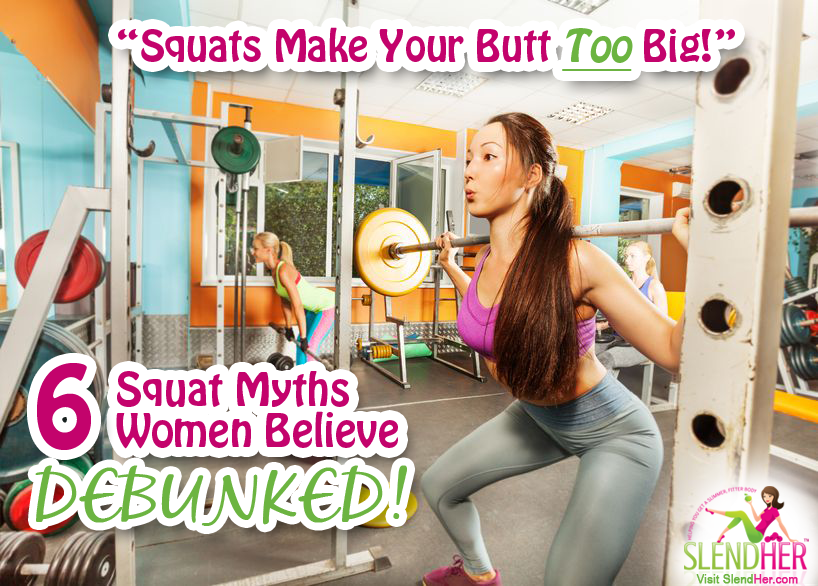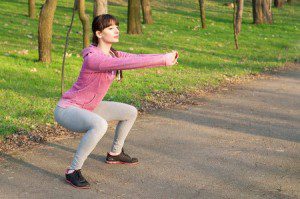
When it comes to lifting weights, certain moves give you more “bang for the buck.” There’s arguably no better move for your upper body than the pushup, and when it comes to lower body, it all starts with the squat.
Yet women often skip squats because of common misconceptions. Here’s the truth behind six common squatting myths:
Squatting Myth: Squatting makes your butt too big.
Skipping the squats because you’re afraid to have a butt the size of Kim Kardashian’s? Don’t worry—you won’t develop a huge booty from squatting. Depending on your workout routine and body composition, your butt may get a little bigger–but it will also be a firmer, more rounded, higher butt. Who doesn’t want that?
Squatting Myth: My legs are already strong from cardio.
Hey, cardio’s great overall exercise, but it won’t do much to build muscular strength because by its nature cardio is something you can do for a long time. To build muscle, you have to tear it down first by overloading it for short bursts of time—and that means challenging exercises you can only manage for 30-60 seconds or so, like squats.
Squatting Myth: Squats are too hard!
Relax—a proper squat really isn’t that complicated.
A basic squat starts with:
• Feet just outside your hips, toes turned out to help activate your glutes;
• Soft knees (meaning they’re not locked);
• Belly drawn in (think about drawing your navel toward your spine);
• Chest up; and
• Shoulders back.
Bend your knees to push your butt back and down, as if you were going to “squat” on a toilet. Your knees always stay behind your toes. When you reach a 90 degree angle (or as deep as feels comfortable) briefly pause and then return to your starting position with soft knees. See? Not hard at all.
Squatting Myth: I’ll have to lift too much weight.
You don’t have to overload your body with more and more weight for results. Boost the intensity by trying variations like:
• Slowing down. Squat down to a count of two, and come up for a count of four; or try coming down for three and coming up for one. Making the eccentric, or lengthening phase (when you’re coming down) longer increases the challenge.
• Pausing at the bottom. Holding your bottom position is an isometric move, meaning your muscles don’t change length but they’re still working to hold your position. Add a pause and feel the intensity increase.
• Adding pulses. Squat and then come up just a few inches before returning to your lowest position. That’s a pulse. Your muscles stay loaded with no rest the way they would have at the top of a regular squat. Try adding a pulse (so bottom position, pulse, bottom, return) to make your squat more challenging, or do a whole set of pulses to up the intensity.

Squatting Myth: I have to have a weight room.
Yeah, it’s nice to have a weighted bar or dumbbells to squat, but weights are a bonus, not a necessity. Try a bodyweight squat with your palms pressed together at your chest. Focus on perfect form, and on going slow (count down for four, then up for four)—even without added weights, you’ll feel the burn.
Squatting Myth: Cardio burns more fat than weight-training.
In the short run, yes, certain cardio exercises can burn more calories than traditional strength-training. But take a longer view. While you may not burn as many calories during the workout itself, squatting uses all of your lower body’s major muscle groups and creates more lean muscle that’s metabolically active, which results in more calories burned all the time.
The result is not only a better butt and tighter legs—but a leaner body overall.
[adform]

Leave a Reply